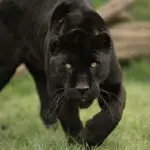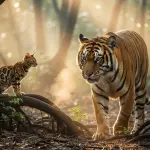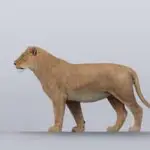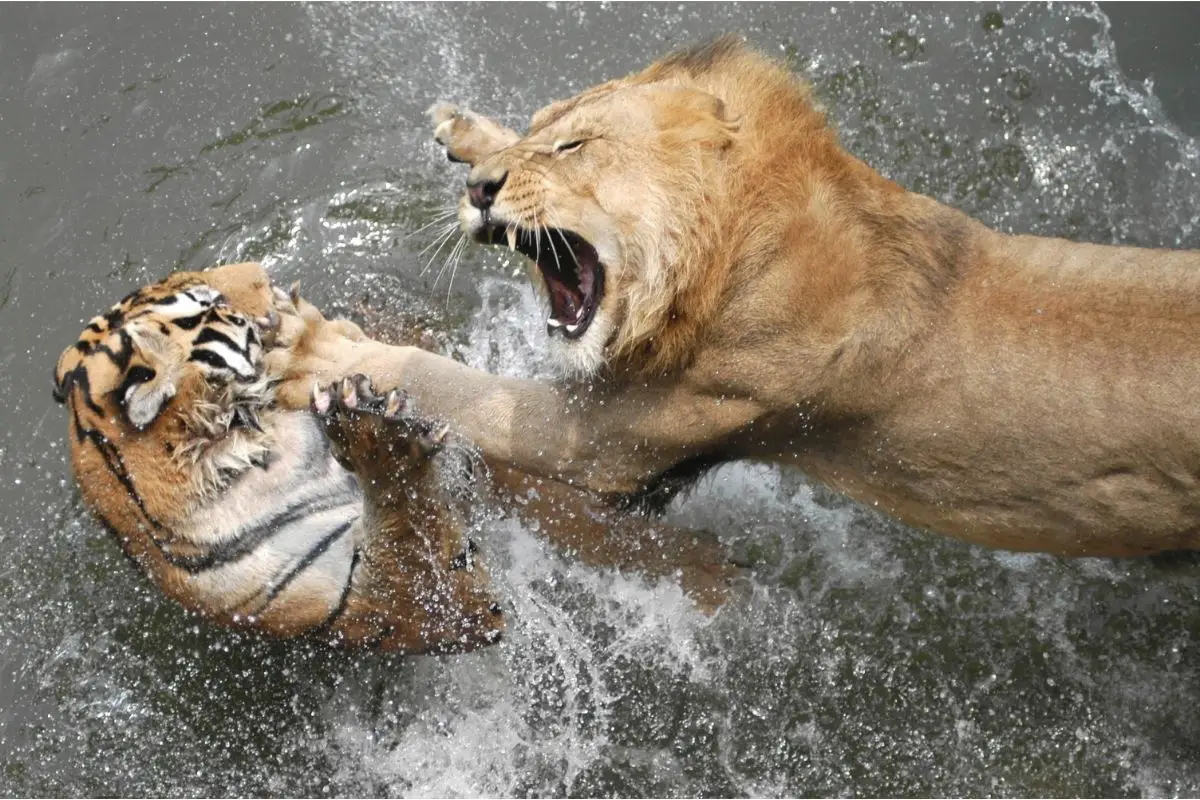Spotting the difference between a jaguar, leopard, and cheetah can feel like solving a puzzle – especially when you’re staring at what appears to be nearly identical spotted cats. Yet these three magnificent predators are as distinct as tigers, lions, and house cats once you know their secrets.
In 2025, with wildlife photography becoming increasingly popular and eco-tourism booming, correctly identifying these apex predators has never been more crucial. Whether you’re planning an African safari, exploring Central American rainforests, or simply want to impress at your next zoo visit, this comprehensive guide will transform you from confused observer to confident identifier.
By mastering the key differences in their physical characteristics, behavioral patterns, habitats, and hunting strategies, you’ll join the ranks of wildlife experts who can distinguish these “big three” spotted cats at a single glance. Let’s dive into the fascinating world where spots tell stories and every rosette reveals a species’ secrets.
The “Big Three” Spotted Cats: Meet the Players
Before we explore their differences, let’s establish our cast of characters with updated 2025 taxonomic classifications and conservation insights.
Jaguar (Panthera onca) – The Americas’ Apex Predator
The jaguar reigns as the largest cat in the Western Hemisphere and holds the title of third-largest big cat globally. These powerhouse predators command respect across their range from Mexico to Argentina, with recent 2025 studies confirming population recoveries in specific conservation zones.
Built like tanks with legs, jaguars possess the strongest bite force of any big cat – a crushing 1,500 PSI that can pierce turtle shells and caiman skulls. Their distinctive rosettes feature internal spots, creating a pattern that’s unmistakable once you know what to look for.
Leopard (Panthera pardus) – The Master of Adaptation
Leopards claim the trophy for most widespread big cat, successfully colonizing habitats from African deserts to Asian mountains. Their incredible adaptability has kept their populations relatively stable compared to their spotted cousins.
These athletic climbers showcase rosettes without internal spots and possess proportionally longer canines than other big cats. Recent genetic studies in 2025 have identified distinct behavioral adaptations across their vast range, making subspecies identification increasingly important for conservation efforts.
Cheetah (Acinonyx jubatus) – The Speed Demon
The world’s fastest land animal, capable of reaching 70 mph in just three seconds, cheetahs represent evolution’s ultimate sprint specialist. Unlike their roaring relatives, cheetahs communicate through chirps, purrs, and distinctive chortling sounds.
Their solid spots, tear-marked faces, and semi-retractable claws set them apart from true “big cats.” Current 2025 conservation programs focus heavily on cheetah protection, as they face the most precarious future of our three species.
Physical Characteristics: Size and Build Comparison
Understanding size differences provides your first major identification clue, as these cats occupy distinctly different weight classes and body types.
Jaguars: The Heavyweight Champions
Jaguars dominate the size charts with their incredibly muscular, compact build. Males typically weigh 125-250 pounds, while females range from 100-200 pounds. Their bodies stretch 5-6 feet in length, plus a substantial 2-3 foot tail.
What truly sets jaguars apart is their stocky, powerful frame – think linebacker rather than marathon runner. Their broad shoulders, thick necks, and massive heads house jaw muscles capable of delivering bone-crushing bites. This robust build enables them to wrestle large prey like caimans and deer in dense jungle environments.
Leopards: The Athletic Middle Ground
Leopards occupy the middle ground in both size and build, typically weighing 60-165 pounds. Males average 100-150 pounds while females weigh 60-100 pounds. Body length reaches 4-6 feet with a 2-2.5 foot tail.
Their build emphasizes versatility over specialization – lean enough for tree climbing, powerful enough for large prey, and compact enough for rocky terrain. This balanced physique explains their success across diverse habitats from African savannas to Asian forests.
Cheetahs: The Lean Speed Machines
Cheetahs present the most distinctive silhouette of the three, with their greyhound-like build optimized entirely for speed. They weigh just 75-140 pounds, with males averaging 130 pounds and females around 110 pounds. Their bodies measure 4-5 feet plus a crucial 2.5-3 foot tail.
Every aspect of cheetah anatomy screams “speed” – long legs, flexible spine, small head, and lean muscle mass. Their distinctive deep chest houses oversized lungs and heart necessary for explosive sprints, while their long tail acts as a rudder during high-speed turns.
[Table: Detailed size and weight comparison showing ranges, averages, and sexual dimorphism for all three species]
Coat Patterns: Decoding the Spot Code
Mastering coat pattern recognition transforms you from guessing to knowing with certainty. Each species displays unique spot architecture that serves as their evolutionary signature.
Jaguar Rosettes: Large, Bold, and Complex
Jaguar rosettes are the most complex and largest of the three species. These black ring patterns contain 1-4 solid spots inside, creating a “flower” appearance against their golden-yellow base coat. The rosette borders are thick and well-defined, often broken into individual spots along the edges.
Key identifying features include:
- Large rosettes (2-3 inches diameter)
- Always contain internal spots
- Thick, sometimes broken borders
- Random distribution across the body
- Solid spots on head, legs, and tail
The belly and throat display cream or white coloring with solid black spots, providing excellent camouflage in dappled forest light.
Leopard Rosettes: Elegant and Empty
Leopard rosettes are smaller and more tightly packed than jaguar patterns, but larger than cheetah spots. The defining characteristic: leopard rosettes never contain internal spots, appearing as empty black rings against their tawny-yellow coat.
Identification markers include:
- Medium-sized rosettes (1-2 inches diameter)
- Always empty inside (no internal spots)
- Clean, unbroken borders
- Dense distribution
- Gradual transition to solid spots on extremities
Some leopards, particularly in forest environments, display such tightly packed rosettes they appear almost solid from a distance – a pattern called “ghost rosettes.”
Cheetah Spots: Simple and Solid
Cheetahs completely abandon the rosette pattern in favor of solid, round or oval black spots measuring 0.75-1.25 inches in diameter. These spots are evenly distributed across their pale yellow to tawny coat, creating a polka-dot appearance.
Distinctive features include:
- Solid spots only (no rosettes)
- Even size and distribution
- Round to oval shape
- Clear borders with solid fill
- Extends to belly (unusual for big cats)
The regular spot pattern helps cheetahs blend into grassland environments where consistent patterns match swaying grasses and dappled sunlight.
Head and Facial Features: Reading the Face
Facial characteristics provide some of the most reliable identification markers, especially when coat patterns aren’t clearly visible.
Jaguar Heads: Power and Proportion
Jaguars possess the most massive heads relative to body size among the three species. Their broad skulls house the powerful jaw muscles necessary for their record-breaking bite force. The head appears almost oversized compared to their stocky bodies.
Key features include:
- Broad, massive skull
- Prominent jaw muscles (creating “jowls”)
- Short, wide muzzle
- Small, rounded ears
- Thick neck merging seamlessly with shoulders
Leopard Heads: Elegant Proportions
Leopard heads display more refined proportions, with elongated skulls that house their impressively long canines – proportionally the longest of any big cat. Their heads appear well-balanced with their athletic builds.
Identifying characteristics:
- Moderately sized, elongated skull
- Prominent canine teeth
- Defined whisker tufts
- Alert, pointed ears
- Muscular but not massive neck
Cheetah Heads: Built for Vision
Cheetah heads immediately stand out due to their distinctive black “tear marks” – solid lines running from the inner eye corners to the mouth. These aren’t just decorative; they reduce sun glare and improve focus during high-speed hunts.
Unique features include:
- Small, rounded head
- Distinctive black tear marks
- Large, prominent eyes
- Small jaw and teeth (designed for breathing, not bone-crushing)
- High-set, rounded ears
The small head size reflects cheetahs’ hunting strategy – they need lightweight skulls for speed and large nasal passages for oxygen intake during sprints.
Geographic Distribution and Habitat Preferences 2025
Understanding where these cats live provides crucial context for identification and reveals their ecological adaptations.
Jaguar Range: Americas’ Apex Predator
Jaguars historically roamed from the southwestern United States to Argentina. Today, their core population concentrates in the Amazon Basin, with smaller populations extending through Central America and Mexico. Recent 2025 conservation efforts have documented successful reintroduction programs in Argentina and population recovery in specific Brazilian protected areas.
Preferred habitats include:
- Amazon rainforest (primary habitat)
- Pantanal wetlands (highest density populations)
- Atlantic coastal forests
- Cerrado grasslands and savannas
- Mangrove swamps
- Gallery forests along rivers
Jaguars require access to water and show remarkable swimming abilities, often hunting aquatic prey like caimans, fish, and turtles.
Leopard Range: The Global Adapter
Leopards claim the most extensive range of any wild cat, successfully occupying habitats across Africa, Asia, and parts of Russia. Their adaptability has allowed them to persist in areas where other big cats have vanished, though fragmentation remains a significant 2025 conservation concern.
Habitat diversity includes:
- African savannas and grasslands
- Tropical and temperate forests
- Mountain regions up to 18,000 feet
- Arid scrublands and semi-deserts
- Rocky outcrops and kopjes
- Urban periphery areas (increasingly common)
This habitat flexibility explains leopards’ relatively stable conservation status compared to their more specialized cousins.
Cheetah Range: Grassland Specialists
Cheetahs occupy the most restricted range of the three species, with populations concentrated in eastern and southern Africa. A critically endangered subspecies, the Asiatic cheetah, survives only in Iran with fewer than 50 individuals as of 2025.
Essential habitats include:
- East African savannas (Serengeti-Mara ecosystem)
- Southern African grasslands
- Semi-arid scrublands
- Open woodlands with grassland clearings
- Livestock areas (increasing human-wildlife conflict)
Cheetahs require open terrain for their hunting strategy and struggle in dense forests or heavily fragmented landscapes.
Behavioral Differences and Hunting Strategies
Understanding how these cats hunt and behave provides insight into their evolutionary adaptations and aids field identification.
Jaguar Behavior: Aquatic Ambush Specialists
Jaguars employ a patient ambush strategy perfectly suited to dense forest environments. They’re exceptional swimmers and often hunt along riverbanks and in flooded areas – behavior unique among big cats.
Hunting characteristics:
- Stealth approach through dense vegetation
- Powerful pounce from close range (10-15 feet)
- Skull-crushing bite (unique among cats)
- Aquatic hunting of caimans, fish, and turtles
- Solitary except during mating
- Territory marking through scent and vocalizations
Jaguars often pierce prey skulls directly rather than using the suffocating throat bite preferred by other big cats, taking advantage of their incredible bite force.
Leopard Behavior: Versatile Tree-Climbing Hunters
Leopards showcase the most versatile hunting repertoire, adapting their strategies to local prey and habitat conditions. Their exceptional climbing abilities set them apart from other large cats.
Behavioral patterns:
- Stalking approach lasting several hours
- Lightning-fast final pounce
- Suffocating throat bite
- Hauling kills up trees (even prey heavier than themselves)
- Opportunistic scavenging
- Highly territorial with complex social hierarchies
The ability to cache kills in trees protects them from scavengers like hyenas and lions, allowing leopards to feed safely over several days.
Cheetah Behavior: High-Speed Chase Specialists
Cheetahs represent evolution’s most specialized pursuit predator, with every behavior adapted for explosive speed and rapid prey capture in open environments.
Hunting sequence:
- Visual prey selection from elevated positions
- Careful approach to within 100-200 meters
- Explosive acceleration (0-60 mph in 3 seconds)
- Trip and grab technique using semi-retractable claws
- Quick suffocation bite
- Rapid feeding before scavenger arrival
Unlike other big cats, cheetahs are vulnerable to kleptoparasitism (food theft) by stronger predators and must eat quickly after kills.
Vocalization Patterns: The Sound of Identification
Each species has evolved distinctive vocal repertoires that serve as audio fingerprints for identification, even when animals aren’t visible.
Jaguar Vocalizations
Jaguars produce some of the deepest, most resonant calls among big cats. Their vocalizations carry well through dense forest environments, serving both territorial and mating functions.
Vocal repertoire includes:
- Deep, grunting roars (lower frequency than lions)
- Rasping cough-bark calls
- Growls and snarls during aggression
- Mewing sounds between mothers and cubs
- Territorial “sawing” calls at dawn and dusk
Leopard Vocalizations
Leopards employ a sophisticated vocal system adapted for communication across varied terrain types, from rocky mountains to dense forests.
Sound patterns include:
- Distinctive “sawing” roar (like wood being cut)
- Raspy cough-bark similar to jaguars
- Aggressive snarls and growls
- Contact calls between family members
- Purring (unlike jaguars and lions)
Cheetah Vocalizations
Cheetahs cannot roar due to their specialized larynx structure, instead producing a unique array of bird-like sounds that set them apart from true “big cats.”
Characteristic sounds:
- High-pitched chirping (like giant birds)
- Purring (louder than house cats)
- Chortling and chattering
- Aggressive spitting and hissing
- Yipping calls between family members
The inability to roar reflects cheetahs’ evolutionary divergence from other big cats and their specialization for speed over power.
Conservation Status and Population Trends 2025
Understanding current conservation challenges helps contextualize these species’ ecological importance and survival prospects.
Jaguar Conservation: Cautious Optimism
Current estimates suggest approximately 170,000-250,000 jaguars remain in the wild, with populations showing stability in well-protected areas but declining in frontier regions. The species is classified as Near Threatened globally but Endangered in Mexico and Central America.
2025 conservation highlights:
- Jaguar Corridor Initiative connecting fragmented habitats
- Successful reintroduction programs in Argentina
- Reduced deforestation rates in core Brazilian territories
- Improved livestock protection reducing human-jaguar conflict
Major threats include habitat fragmentation, cattle ranching expansion, and illegal hunting for traditional medicine markets.
Leopard Conservation: Stable but Declining
With an estimated global population of 700,000-1,000,000 individuals, leopards maintain the healthiest numbers among our three species. However, regional populations face severe pressure, with some subspecies critically endangered.
Current status includes:
- Stable populations in major African protected areas
- Critical declines in Asia (particularly India and China)
- Successful anti-poaching efforts reducing illegal trade
- Growing human-wildlife conflict in expanding agricultural areas
The IUCN Red List classifies leopards as Vulnerable with decreasing population trends.
Cheetah Conservation: Racing Against Extinction
Cheetahs face the most precarious future of our three species, with only 6,500-7,000 individuals remaining in the wild. Their specialized habitat requirements and vulnerability to human disturbance make conservation particularly challenging.
Critical 2025 initiatives include:
- Translocation programs establishing new populations
- Livestock guardian dog programs reducing farmer conflicts
- Genetic rescue efforts addressing inbreeding depression
- Community-based conservation in Namibia and Botswana
The Cheetah Conservation Fund leads global efforts to prevent extinction through research, education, and habitat protection.
Quick Identification Field Guide
When encountering one of these cats in the wild, captivity, or media, use this rapid identification checklist:
Size Assessment
- Massive and stocky = Jaguar
- Medium-sized and proportional = Leopard
- Lean and leggy = Cheetah
Coat Pattern Analysis
- Large rosettes with internal spots = Jaguar
- Medium rosettes, empty inside = Leopard
- Solid spots only = Cheetah
Facial Features
- Massive head and jaw = Jaguar
- Proportional head with long canines = Leopard
- Small head with tear marks = Cheetah
Geographic Context
- Americas = Jaguar
- Africa/Asia = Leopard
- African grasslands/Iran = Cheetah
[Table: Quick reference comparison chart showing all key identifying features side-by-side]
Frequently Asked Questions
Can jaguars, leopards, and cheetahs interbreed?
Jaguars and leopards are both Panthera species and could theoretically interbreed, though this hasn’t been documented in the wild due to geographic separation. Cheetahs belong to a different genus (Acinonyx) and cannot interbreed with either species.
Which cat has the strongest bite force?
Jaguars possess the strongest bite force at 1,500 PSI, allowing them to crush turtle shells and caiman skulls. Leopards generate around 1,100 PSI, while cheetahs have the weakest bite at approximately 400 PSI.
How fast can each species run?
Cheetahs are the fastest at 70 mph in short bursts, jaguars can reach 50 mph briefly, and leopards peak at around 36 mph. However, jaguars and leopards have much better endurance for sustained pursuit.
Do all three species climb trees?
Leopards are exceptional climbers, often hauling kills heavier than themselves into trees. Jaguars can climb but prefer staying on the ground near water. Cheetahs rarely climb due to their semi-retractable claws and lightweight build.
Which species is most endangered?
Cheetahs face the greatest extinction risk with only 6,500-7,000 individuals remaining. Jaguars number around 170,000-250,000, while leopards maintain the largest population at 700,000-1,000,000 individuals.
Can you tell the difference between male and female cats?
Males of all three species are typically 20-30% larger than females. Male jaguars and leopards have more pronounced muscular builds, while male cheetahs show less dramatic size differences and may display slightly broader heads.
What’s the best way to see these cats in the wild?
For jaguars, visit the Pantanal in Brazil or Costa Rica’s national parks. Leopards are best viewed in South African game reserves or Indian national parks. Cheetahs are most easily found in Kenya’s Maasai Mara or Namibia’s conservancies.
Do these cats make good pets?
Absolutely not. All three species are dangerous wild animals requiring specialized care, enormous territories, and specific diets. They’re also protected by international law, making private ownership illegal in most jurisdictions.
Conclusion: Mastering Big Cat Identification
By understanding the distinctive characteristics of jaguars, leopards, and cheetahs, you’ve gained valuable knowledge that enhances any wildlife encounter. Remember the key identifiers: jaguars’ massive builds and rosettes with internal spots, leopards’ athletic frames and empty rosettes, and cheetahs’ lean bodies with solid spots and distinctive tear marks.
These identification skills serve purposes beyond impressive wildlife knowledge. They contribute to citizen science efforts, support conservation awareness, and deepen your connection to the natural world. As human activities continue impacting wild habitats, informed observers become crucial allies in protecting these magnificent predators.
Whether you encounter these cats during African safaris, Central American adventures, or visits to accredited zoos and sanctuaries, you now possess the expertise to identify them confidently. Share this knowledge with fellow wildlife enthusiasts, and together we can build appreciation for these irreplaceable apex predators.
Next time you spot a golden coat adorned with black markings, take a moment to examine the details. Those patterns tell evolutionary stories spanning millions of years – stories of adaptation, survival, and the incredible diversity of life on Earth. By recognizing the differences between jaguars, leopards, and cheetahs, you’re not just identifying animals; you’re reading chapters in the book of evolution itself.
- Bengal Cat vs Wild Bengal Tiger: Complete Comparison 2025 - October 31, 2025
- Complete Wild Cat Spotting Guide for Hikers 2025 - October 31, 2025
- Lynx vs Bobcat: Complete Field Identification Guide 2025 - October 30, 2025





